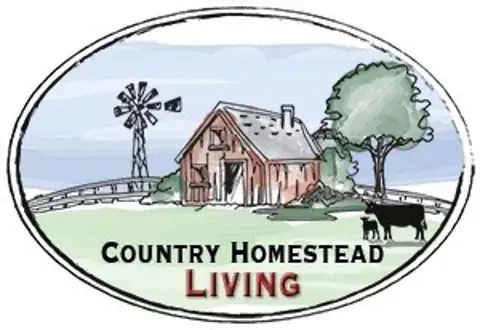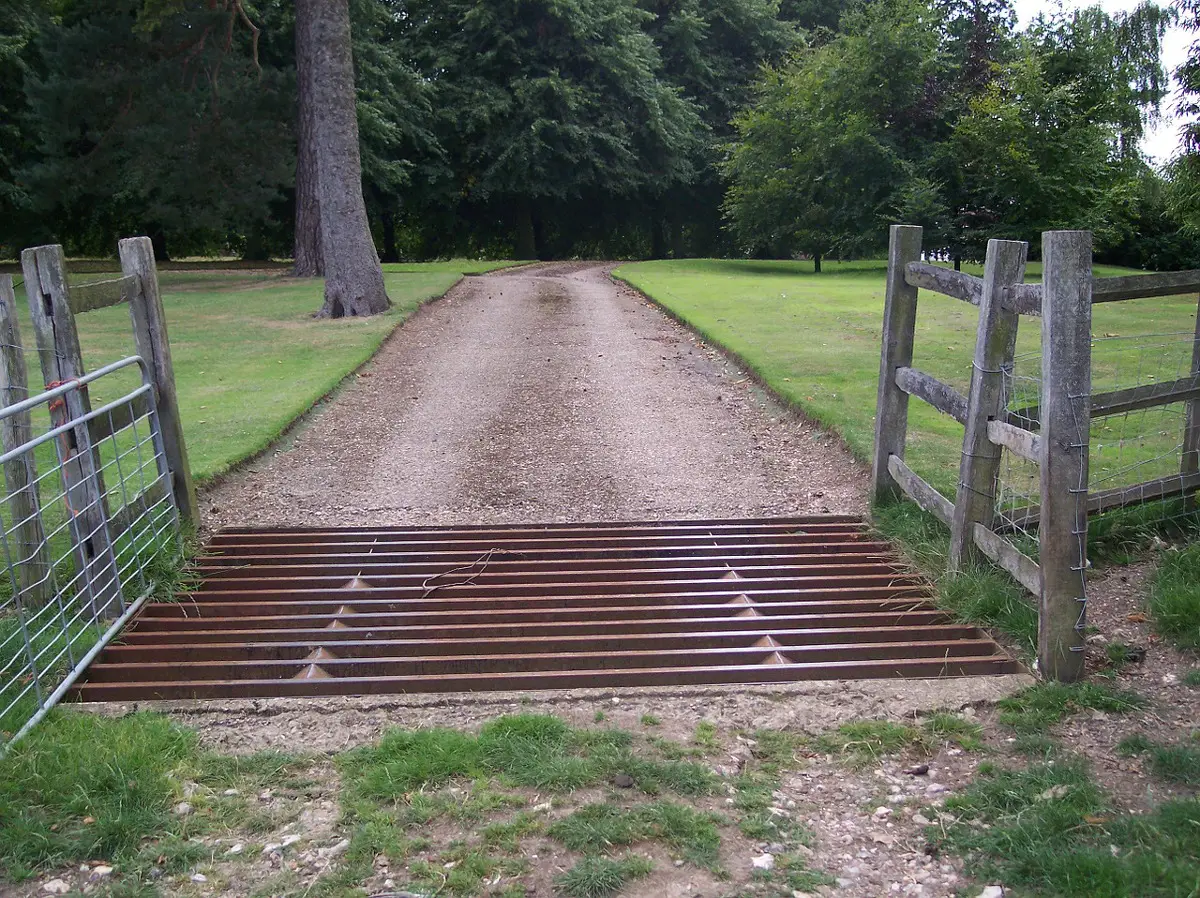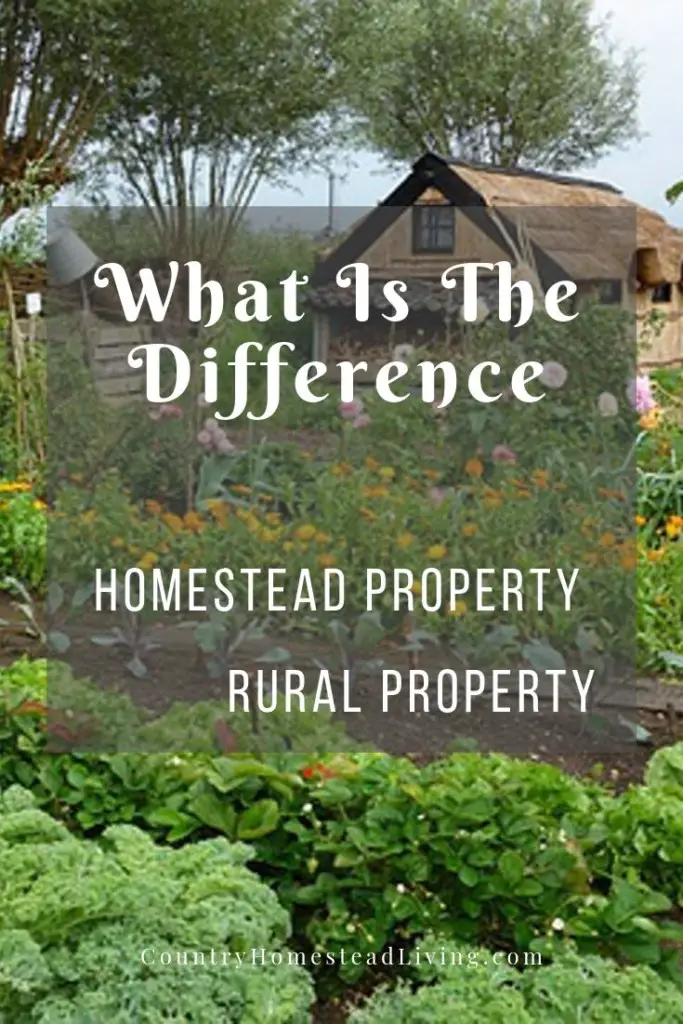As someone who has lived on both country and homestead property I am often asked what the difference between the two types of property is.
What is the difference between country and homestead property?
The difference between country and homestead property involves differences in attitude, lifestyle and for many people it includes a difference in the values they want to instill in their children.
So, lets take a look at the differences! The following article is my answer to this question.
What Was Homesteading?
The concept of homesteading in America originally resulted from the Homestead Act of 1862.
Under this Act a homesteading family could receive up to 160 acres of land if they lived on the land for five years and made certain improvements on that property.
To discover more, you can read an informative article I wrote called, “Homestead Act Of 1862 (What Was It, Is It Still Available)”
The Homestead Act of 1862 is no longer in effect and large tracts of land in America free for the settling and improving are a thing of the past.
However, Beatrice, Nebraska has a Homestead Act of 2010 based somewhat upon the Homestead Act of 1862.
Beatrice, Nebraska provides a free city lot to those who pass an application process.
The condition of receiving the free lot is they have to build and live on that lot as their primary residence for three years.
Homestead Act Of 2010
Under the Homestead Act of 2010 Beatrice, Nebraska had a limited number of city residential lots that were about 83′ x 140′ in size.
Other towns that offered free land in return for building and living on the land were Marne, Iowa, New Richland, Minnesota and Curtis, Nebraska.
In addition, Kansas began a program called Kansas Free Land that involved some dozen communities across Kansas with their own particular offers and requirements for land.
Some of these offers for free land may still be available.
However, they are offers for relatively small parcels of land that may not be large enough for many homesteading activities.
By 2017 Some Free Land Could Still Be Found
Marne, Iowa still had some lots of about 1/4 acre size in 2017.
The house built had to have a partial basement and be at least 1200 square feet in size.
Marquette, Kansas had plots of land that were up to 1/2 acre in size.
Houses had to meet Marquette’s design standards and be at least 1000 square feet.
Lincoln, Kansas had lots up to about 1 acre available.
New Richland, Minnesota had some 1/4 acre lots available.
Flagler, Colorado had free land if you would start a business on it.
Some of this free land may still be available. You’d have to check out the locations yourself.
Enter the towns into an internet search engine with the inquiry “free land.”
Problem is, these free lots are city, not country, and they are not in what you would call prime areas for homesteading.
Traditionally, American Homesteading was a lifestyle where the homesteading family grew or raised as much of their needs as was possible.
What they could not grow or raise they purchased from the nearest Country Store using the money earned from selling their excess produce.
Thus homesteading was self-sustaining living as much as humanly possible.
What Is Country Property?
Country property is typically acreage outside of a city or suburbia.
It can consist of a home and well manicured yard or it can contain some of the amenities of a small family farm.
Many times a country property may be what is also termed as Horse Property.
This can have a large, several acre pasture with a horse barn and riding areas but none of the typical homestead garden, orchard, or other livestock areas.
Some country property consists of a one crop farm such as wheat or corn.
Other country property might be a cattle farm or a pig farm.
Sometimes large farms are subdivided into smaller parcels and sold as country property.
Many times these large farms used chemical fertilizers and herbicides in their farming operations.
There is a real danger that the fertilizers and herbicides ended up in the ground water contaminating it and any wells that ground water supplies.
Further, if you want to raise organic produce it could be 10 years or more, if it happens at all, before the land tests negative for the chemical fertilizers and herbicides.
A family farm would be a type of country property that could be the closest to a traditional homestead.
Many family farms have a garden, orchard, and areas to raise chickens, goats, cows or other animals.
Some country property is just a few acres where someone can have peace and quiet.
They can be away from nosy neighbors and feel safer from crime and pollution.
What Is Homestead Property?
Homestead property is property that is settled with a definite purpose in mind.
The homesteaders are looking for a place where they can live as close to a self-sustaining life as possible.
A Homestead is more than just property. there is a Homesteading Attitude.
The Homesteading Attitude
The homesteading attitude is a major difference between those who call themselves homesteaders and those who are simply country dwellers.
I wrote an article that tells how homesteading came about in, “Manifest Destiny, The Homesteader And Homestead Exemptions.”
Homesteaders moved to the country because they wanted to raise as much of their food as possible.
They are concerned with the quality of food grown on the large agribusiness farms that supply much of the produce and food to America’s grocery stores.

A homesteader knows that much of the commercially grown produce is grown with chemical fertilizers and the fields are probably drenched with herbicides like glyphosate (Roundup).
They know that many of the large scale agribusiness farms only raise GMO, Genetically Modified Organism, foods.
These GMO foods were genetically modified to allow them to survive the drenching of the fields with herbicides like Roundup.
By being GMO, these foods absorb the glyphosate (Roundup) without being killed by it.
Normal food processing and cooking does not remove the glyphosate (Roundup) from the food.
Many people who want to homestead also want to avoid those foods that are high in glyphosate (Roundup).
They know that these foods, if not 100% Organic can contain significant amounts of Roundup:
- Soy, including soy oil and products containing soy
- Corn and corn oil
- Canola oil
- Beets and beet sugar
- Almonds
- Dried peas
- Carrots
- Quinoa
- Sweet Potatoes
Recent Medical Research has implicated glyphosate (Roundup) as a causative agent of Non-Hodgkin’s Lymphoma, a type of immune system cancer.
Exposure to 2,4-D and dicamba is linked to non-Hodgkin’s lymphoma (NHL), the same cancer with which glyphosate has been associated.
Int. J Environ. Res. Public Health 11: 4449-4527. McDuffie HH et al (2001).
Because of this knowledge, many families who want to live a homestead life are looking for a specific type of country property.
They want country property that has not been a part of a large farm that has been subdivided into smaller parcels.
Many future homesteaders refuse to even look at land that is in areas of the mid-West and West where large farms using chemical fertilizers and herbicides are common.
Instead they prefer to look for land that might need underbrush cleared off of it.
They know that if the land is covered with underbrush, there is little chance it was once farmed where chemical fertilizers and herbicides or pesticides were used on it.
This land is ideal for raising organic produce.
The Homestead Lifestyle
One way of describing the homestead lifestyle could be natural living.
In this context natural living could mean finding a parcel of land that tested negative for chemical fertilizers and herbicides and learning how to raise crops and animals without using commercial fertilizers or feeds, unless they were certified organic.

Homesteaders learn how to plant their gardens in ways that combine flowers or other plants that repel bugs that eat the produce so they do not have to use pesticides.
They focus on growing healthy plants and learning natural ways of eliminating weeds, besides the old fashioned method of weeding the garden.
They also focus on natural methods of food production.
You can read an article here on our site called, “How To Plan Your Garden For Success – Helpful Tips ” to learn more so you too can have a successful gardening experience.
Values Homesteaders Want To Instill In Their Children
The first value homesteaders want to instill in their children is a love for the land.
A natural side effect of a love for the land is how to care for the land to preserve it in a state where it will always be able to support life, whether human, plant or animal life.
Another value homesteaders want to instill in their children is a healthy lifestyle.
That means not only the exercise on the homestead that comes with the daily chores but also learning to grow healthy food that is not contaminated with chemical fertilizers, herbicides or pesticides.
A third value homesteaders want to instill in their children is living a sustainable lifestyle.
This means knowing how to raise most of what you eat as well as raising extra to sell to have the means of purchasing what you can’t raise.
The independence learned from a homestead lifestyle is one of the things that made America what it is today.
Many homesteaders believe that the American future depends upon American’s understanding what independence and a sustainable lifestyle really is.
What Is The Difference Between Country And Homestead Property?
The difference is more than just the property itself.
The difference is a belief, a philosophy, that is shared by homesteaders everywhere. It involves more than just the land or where the land is located.
It is the lifestyle lived on the land that makes the difference between country and homestead property.
A lifestyle that is related to those hardy pioneers who settled the American mid-West and West under the Homestead Act of 1862 and its progeny.
Related Questions
How much land is needed for a homestead?
The answer depends upon what you want to raise on your homestead and where it is located.
To be self-sustaining in mountainous or snow country a homestead needs a wood lot for firewood.
It typically takes a 5 acre wood lot to have a sustainable source of firewood for a 1500 square foot home.
Carefully planned and located in an area of good soil, plenty of water, and a suitable growing season, 5 acres dedicated to garden, orchard, and some few stock animals is sufficient.
If in an area where it gets cold in winter, you would need the additional five acre woodlot for a total of 10 acres.
I talk about this and much more in my article, “Cold Climate Homesteading (House, Insulation, Micro-Climate)” that would be good to read.
Is there a way to know without testing the soil if chemical fertilizers or herbicides have been used?
The best way is to keep your eyes open when looking at property.
Asking may or may not give you the correct answer.
When looking in sheds, garages, barns etc. keep a look out for empty or partially empty containers of chemical fertilizers (not OMRI Certified Fertilizers which are OK to use on organic gardens) and herbicides.
Is land that has not been cleared more expensive than cleared land?
As a general rule, land that has been cleared is more expensive because it is considered ready to use.
Land that has not been cleared is usually less expensive because of the work involved in clearing the land before use.
Some Homesteaders prefer to clear their own land knowing it will be suitable for organic produce.


